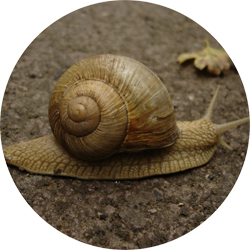Indirect facilitation drives species composition and stability in drylands
by Danet, Alain, Florian D. Schneider, Fabien Anthelme, Sonia Kéfi
Published: 20 November 2020
In: Theoretical Ecology
doi: 10.1007/s12080-020-00489-0
Dryland ecosystems are likely to respond discontinuously to gradual changes in environmental conditions. Direct facilitation between plants, whereby plants improve the local environmental conditions for others, has been shown to be a mechanism contributing to these discontinuous ecosystem transitions. Theoretical models describing dryland vegetation dynamics often consider a single plant species and one type of facilitation, namely direct facilitation. However, another type of facilitation–indirect facilitation–is widespread in dryland ecosystems as well; it is performed by plants protected against grazing, the nurses, when this protection extends to other plants growing in their neighbourhood that are deprived of such protection, the protegees. Little is known about the long-term effects of indirect facilitation on dryland dynamics. Here, we developed and analysed a theoretical model including two species–a nurse and a protegee–and indirect facilitation through grazing. We investigated the effects of indirect facilitation on species composition, species spatial clustering and the stability of dryland ecosystems. We showed that indirect facilitation through grazing enables the stable coexistence of the nurse and the protegee and allows the reversibility of the protegee extinction. Surprisingly, the strength of indirect facilitation affected neither the total nor the interspecific vegetation clustering. Our study highlights that spatially explicit grazing protection may affect species composition and the stability of dryland ecosystems and gives hints about how species interactions translate into spatial clustering.
Related publications
- Florian D. Schneider & Sonia Kéfi (2015), Code release for article "Spatially heterogeneous pressure raises risk of catastrophic shifts", , doi: 10.5281/zenodo.35034
- Alain Danet, Alex Genin, Vishwesha Guttal, Sonia Kefi, Sabiha Majumder, Sumithra Sankaran, Florian Schneider (Maintainer) (2015), R-package caspr: running spatial disturbance models in a cellular automata framework, , doi:
- Alexandre Génin, Sabiha Majumder, Sumithra Sankaran, Florian D. Schneider, Alain Danet, Miguel Berdugo, Vishwesha Guttal, Sonia Kéfi (2018), Spatially heterogeneous stressors can alter the performance of indicators of regime shifts, Ecological Indicators, 94 :520-533 doi: 10.1016/j.ecolind.2017.10.071 (pdf)
- Alexandre Génin, Sabiha Majumder, Sumithra Sankaran, Alain Danet, Vishwesha Guttal, Florian D. Schneider, Sonia Kéfi (2018), Monitoring ecosystem degradation using spatial data and the R package spatialwarnings, Methods in Ecology and Evolution, 9 :2067-2075 doi: 10.1111/2041-210X.13058 (pdf)
- Schneider, F.D., Kéfi, S. (2015), Spatially heterogeneous pressure raises risk of catastrophic shifts, Theoretical Ecology, 9 2:207-217 doi: 10.1007/s12080-015-0289-1 (pdf)
- van den Elsen, Erik, Lindsay C. Stringer, Cecilia De Ita, Rudi Hessel, Sonia Kéfi, Florian D. Schneide, Susana Bautista, Angeles G. Mayor, Mara Baudena, Max Rietkerk, Alejandro Valdecantos, Victoriano R. Vallejo, Nichola Geeson, C. Jane Brandt, Luuk Fleskens, Lia Hemerik, Panos Panagos, Sandra Valente, Jan J. Keizer, Gudrun Schwilch, Matteo Jucker Riva, Diana Sietz, Michalakis Christoforou, Diofantos G. Hadjimitsis, Christiana Papoutsa, Giovanni Quaranta, Rosanna Salvia, Ioannis K. Tsanis, Ioannis Daliakopoulos, Heleen Claringbould and Peter C. de Ruiter (2020), Advances in Understanding and Managing Catastrophic Ecosystem Shifts in Mediterranean Ecosystems, Frontiers in Ecology and Evolution, doi: 10.3389/fevo.2020.561101 (pdf)
